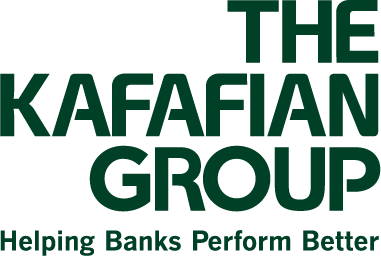Stock Market and M&A Activity / Bank Technology
Guest: Gerard Cassidy, Managing Director of Equity Research, RBC Capital Markets
Podcast Show Notes:
Our This Month In Banking (TMIB) podcast will highlight significant news and events in banking and our hosts’ take on them, along with interviews with industry thought leaders. TMIB will be available on the last Wednesday of every month here, on Stitcher, Soundcloud, and iTunes for your listening enjoyment. Join us on your commute or at your desk.
This month Gerard S. Cassidy was TMIB’s guest for the entire podcast to discuss a variety of banking topics. Mr. Cassidy is Managing Director of Equity Research with RBC Capital Markets and is also the President of the BancAnalysts Association of Boston, Inc. He is often quoted in financial publications regarding the banking industry and he appears often on leading financial broadcasts discussing banking and economic issues and the impact on bank stocks. Mr. Cassidy is well known as the creator of the Texas Ratio, a ratio used by investors to determine whether a bank might be heading towards insolvency.
Topic 1: Impact of the Stock Market Decline on Bank M&A
Start time 5:56
While we expect consolidation of the industry to continue, the increased volatility in the stock market we are seeing today tends to put a damper on M&A activity because the acquirer often uses their stock as currency to buy the target. When that falls in value, the acquirer is unable to pay the same price that they would have paid if their stock had a higher valuation. So increased volatility will slow M&A activity down in the near term. However, longer term, the M&A trend that began when regional interstate banking laws were put in place in the 1980’s will continue, in Mr. Cassidy’s opinion, for the next ten to fifteen years.
The psychological effect of lower sale and purchase prices could also affect M&A activity. The biggest barrier sellers have is comparing the price to book on their deal to other recent deals, particularly if theirs is not as high. Both buyer and sellers should consider relative pricing when evaluating transactions. Additionally, sellers should consider the upside potential of the currently lower trading multiples of high quality acquirers and the opportunity to share in the upside performance of these companies when the market recovers and trades back to historical values.
Topic 2: Insights on Recent Bank M&A Transactions (NYCB-AF, KEY-FNFG)
Start time 14:50
New York Community Bancorp (NYCB) announced on October 29th that it would acquire Astoria Financial Corporation (AF). Astoria shareholders will receive one share of NYCB common stock and 50 cents in cash for each of their shares. In addition, NYCB decided to do a balance sheet restructuring which required them to issue common stock to help pay for prepayment penalties to retire wholesale borrowings. NYCB, which has a high dividend payout ratio, also lowered its dividend in 2016. NYCB’s stock price decreased substantially after the deal announcement.
The structure of this deal did not include caps and collars which can be a critical component of transaction negotiation, particularly in volatile market environments like we are currently experiencing.
Separately, Cleveland-based KeyCorp (KEY) agreed to buy First Niagara Financial Group Inc. (FNFG) of Buffalo for $4.1 billion. With approximately $135 billion in combined assets, the deal will create the 13th largest U.S.-based commercial bank. But New York State Governor Andrew Cuomo urged regulators to block the acquisition. In a Feb. 10 letter to officials of the Federal Reserve Board, the OCC and the U.S. Justice Department, Governor Cuomo said the combination of the two banks would hurt consumers and upstate New York’s economy.
What impact will the Governor’s letter have on the transaction?
Topic 3: Bank Technology
Start time 28:07
On January 25th, MB Financial Inc.’s (MBFI) CEO Mitchell Feiger said during MB’s earnings conference call: “Generally, bank technology is in a sorry state when compared to our new and rapidly growing nonbank competitors. But I think that banks that under-invest in technology subject themselves to great risk.”
What impact does rapidly changing technology have on community banks in particular?
Watch for episode 3 of This Month in Banking to be released on Wednesday, March 30, 2016 and a new episode on the last Wednesday of every month.
Thank you for listening!
Some links to articles may require subscription and/or login.
